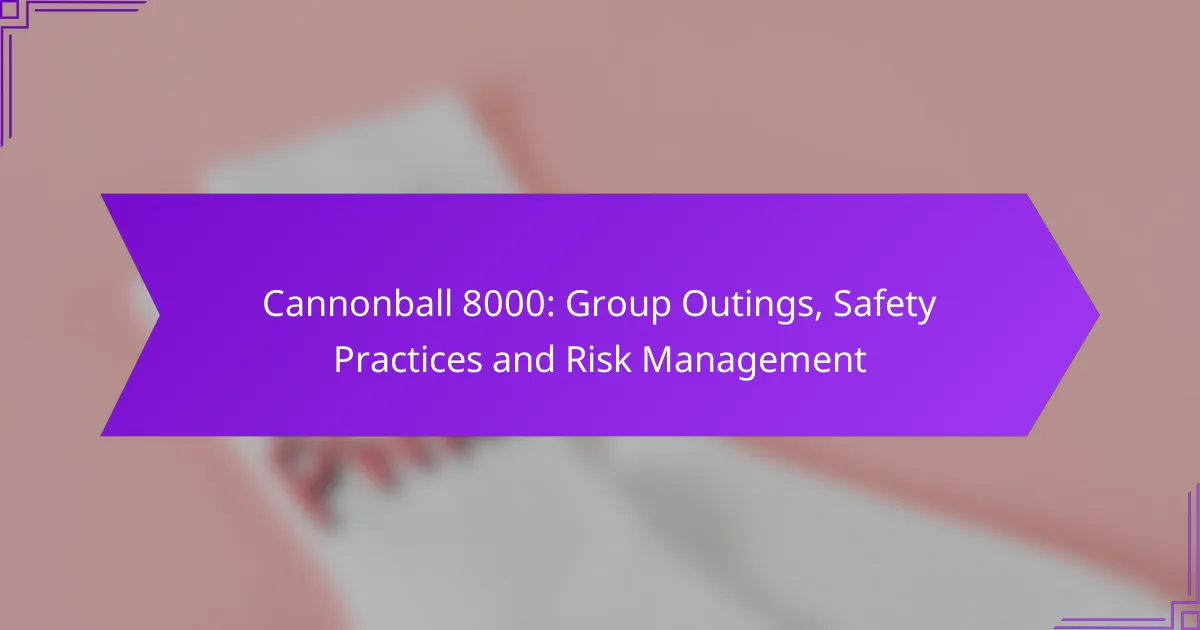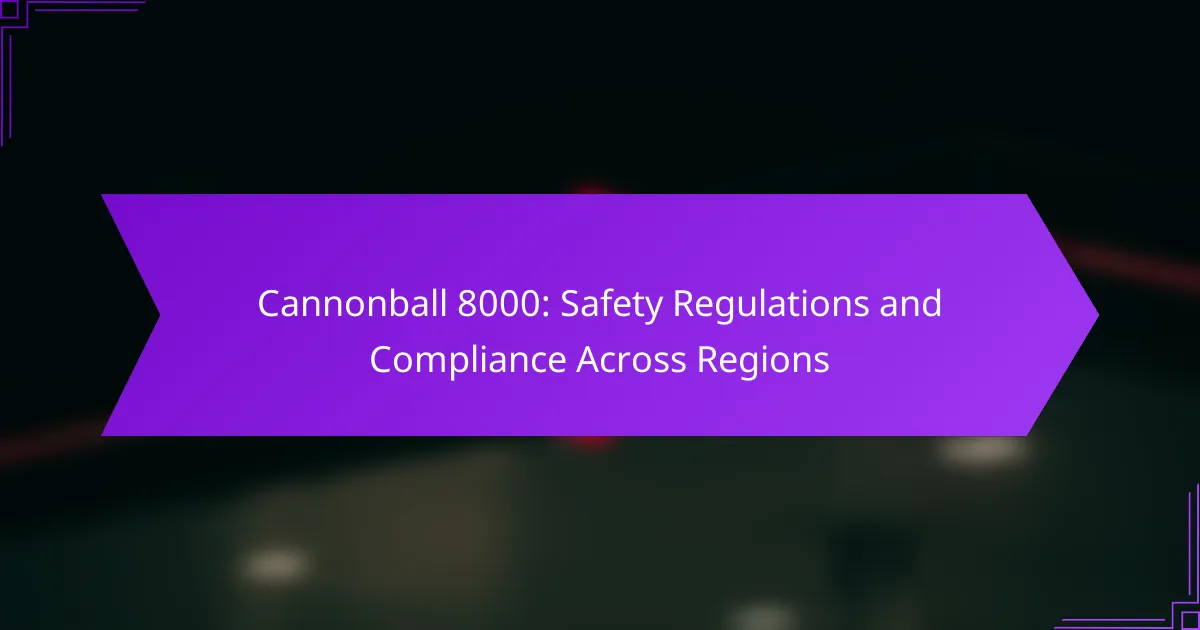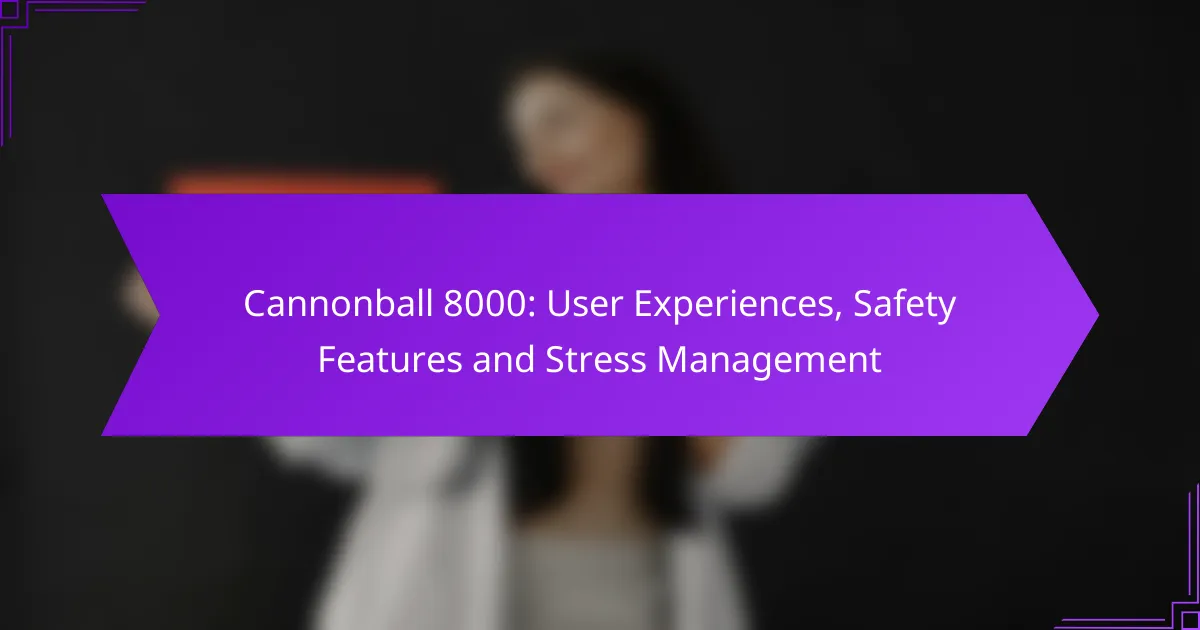The Cannonball 8000 stands out in the watercraft market due to its advanced safety features designed to enhance user protection and reliability. With systems like an automatic bilge pump and a reinforced cockpit, it prioritizes stability and risk reduction during operation. When evaluating its safety profile against other watercraft, various aspects such as braking systems and emergency protocols come into play, highlighting the unique advantages of the Cannonball 8000.
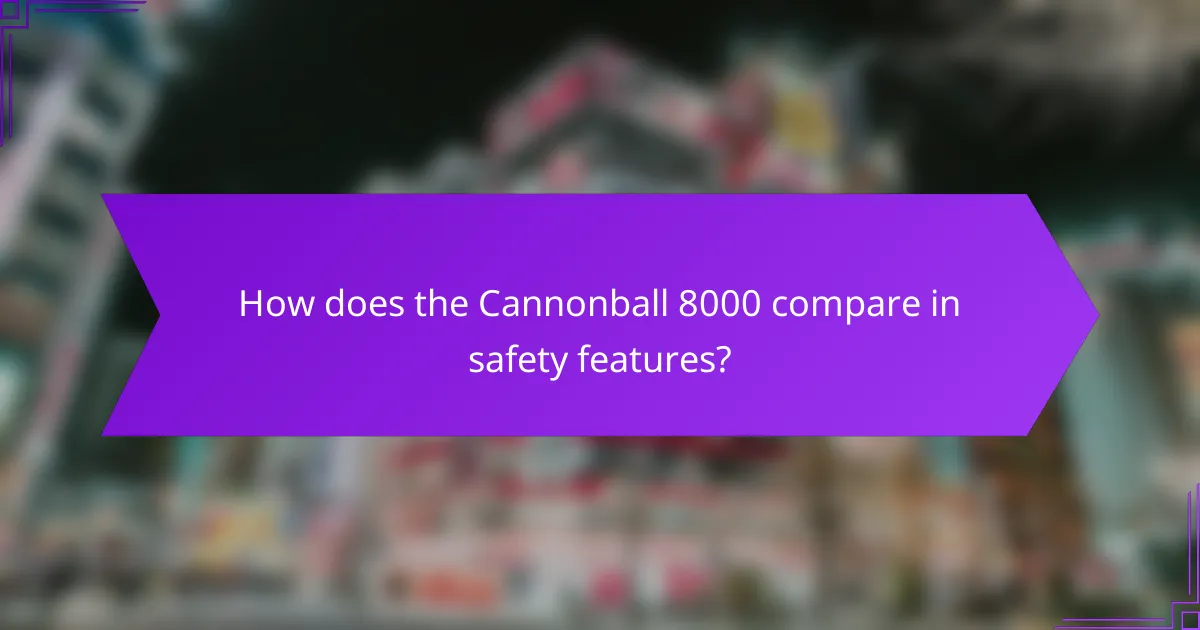
How does the Cannonball 8000 compare in safety features?
The Cannonball 8000 offers advanced safety features that set it apart from other watercraft. Its design incorporates multiple safety systems to enhance stability and reduce risks during operation.
Advanced hull design
The Cannonball 8000 features a unique hull design that improves hydrodynamics and reduces drag. This design allows for better maneuverability and stability, particularly in challenging water conditions. A well-constructed hull can significantly lower the chances of capsizing.
Integrated safety systems
This watercraft is equipped with integrated safety systems that include automatic bilge pumps and emergency shut-off switches. These systems activate in critical situations, helping to prevent accidents and manage water ingress effectively. Regular maintenance of these systems is crucial for optimal performance.
Stability in rough waters
The Cannonball 8000 is designed to maintain stability even in rough waters, thanks to its low center of gravity and wide beam. This stability is essential for both novice and experienced operators, as it minimizes the risk of tipping over. When navigating choppy waters, the boat’s design allows for a smoother ride.
Emergency flotation devices
Equipped with built-in emergency flotation devices, the Cannonball 8000 ensures that it remains buoyant even if it takes on water. These devices are crucial for survival in emergency situations. It’s advisable to familiarize yourself with their location and operation before setting out on the water.
Impact-resistant materials
The construction of the Cannonball 8000 utilizes impact-resistant materials that enhance its durability and safety. These materials help protect the vessel from damage during collisions or rough handling. Regular inspections for wear and tear can help maintain the integrity of these materials over time.

What safety features set the Cannonball 8000 apart?
The Cannonball 8000 is distinguished by its advanced safety features, which enhance both user protection and overall reliability on the water. Key elements such as an automatic bilge pump, a reinforced cockpit, and child safety harnesses contribute significantly to its safety profile.
Automatic bilge pump
The Cannonball 8000 is equipped with an automatic bilge pump that activates when water levels rise beyond a safe threshold. This feature helps prevent capsizing and maintains buoyancy, especially in rough waters. Users should regularly check the pump’s functionality to ensure it operates effectively during outings.
In comparison to other watercraft, the automatic bilge pump in the Cannonball 8000 provides peace of mind, as it reduces the need for manual intervention. This can be particularly beneficial for less experienced operators who may not be vigilant about monitoring water levels.
Reinforced cockpit
The reinforced cockpit of the Cannonball 8000 enhances structural integrity and protects occupants from potential impacts. This design feature is crucial during turbulent conditions, as it minimizes the risk of injury from sudden jolts or collisions. Regular inspections for wear and tear can help maintain its protective qualities.
Compared to standard cockpits found in other watercraft, the Cannonball 8000’s reinforced design offers superior safety, making it a preferred choice for families and recreational users. It also provides a more stable environment for passengers, especially in choppy waters.
Child safety harnesses
Child safety harnesses are an essential feature of the Cannonball 8000, designed to secure younger passengers and prevent falls overboard. These harnesses are adjustable and can accommodate various sizes, ensuring a snug fit for children of different ages. Parents should always ensure that harnesses are properly fastened before setting out.
While many watercraft may offer basic seating, the inclusion of dedicated child safety harnesses in the Cannonball 8000 sets it apart. This feature not only enhances safety but also allows parents to enjoy their time on the water with greater confidence, knowing their children are secure.

How do other watercraft compare in safety?
When comparing the safety features of the Cannonball 8000 with other watercraft, it’s essential to consider various aspects such as stability, braking systems, and emergency protocols. Each model has unique safety features that cater to different riding conditions and user preferences.
Safety features of Sea-Doo GTI
The Sea-Doo GTI is equipped with several safety features that enhance rider protection. Its Intelligent Brake and Reverse (iBR) system allows for quick stopping, reducing stopping distance significantly compared to traditional watercraft. Additionally, the GTI includes a learning key that limits speed for novice riders, promoting safer operation.
Another notable feature is the Sea-Doo’s stability system, which helps maintain balance in rough waters. This design makes it easier for riders to handle the craft, especially in challenging conditions. Regular maintenance and adherence to safety guidelines are crucial for maximizing these features.
Safety features of Yamaha Waverunner
The Yamaha Waverunner boasts a range of safety features designed to protect riders and passengers. One key feature is the RiDE system, which provides intuitive throttle and braking control, allowing for smoother handling and quicker stops. This system is particularly beneficial for inexperienced riders.
Additionally, the Waverunner includes a remote control engine shut-off feature, which can be activated if the rider falls off. This prevents the watercraft from continuing to operate unsupervised, reducing the risk of accidents. Riders should familiarize themselves with these features to ensure safe usage.
Safety features of Kawasaki Jet Ski
Kawasaki Jet Skis are known for their robust safety features, including the Smart Steering system that helps maintain control during sudden turns. This feature is especially useful for avoiding obstacles and enhancing rider confidence. The Jet Ski also includes a built-in engine cut-off switch that activates when the rider is ejected from the seat.
Moreover, Kawasaki offers a comprehensive safety kit that includes a fire extinguisher and a first aid kit, ensuring that riders are prepared for emergencies. Regular safety checks and understanding the watercraft’s features can significantly improve overall safety on the water.
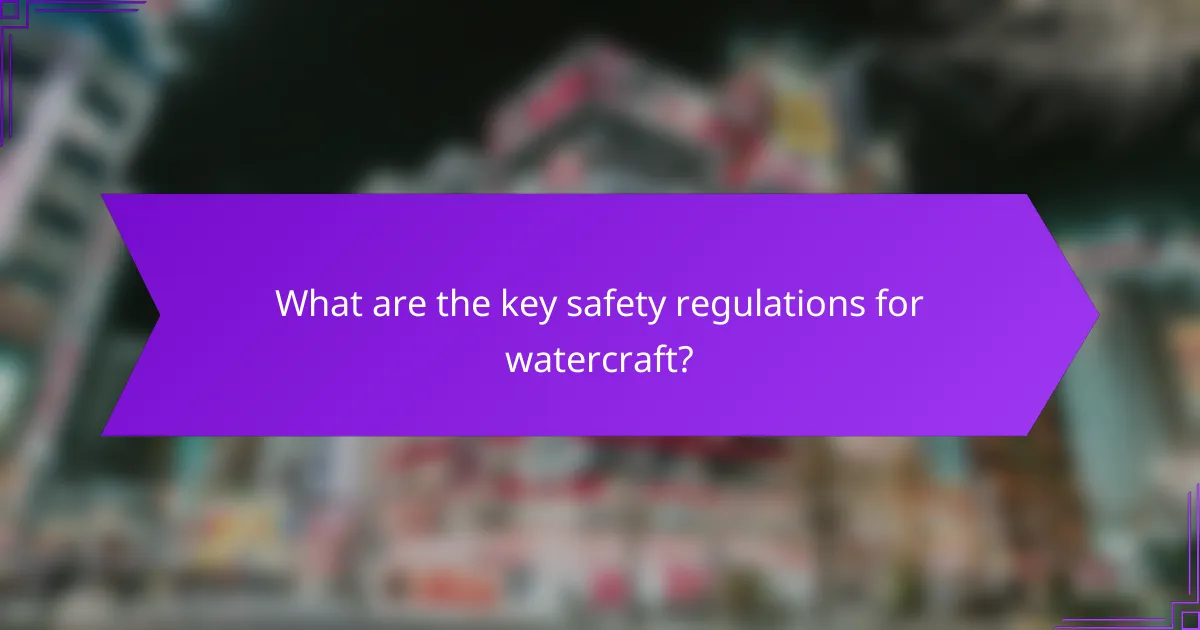
What are the key safety regulations for watercraft?
Key safety regulations for watercraft focus on ensuring the safety of passengers and operators through compliance with established guidelines. These regulations include equipment requirements, operational protocols, and safety training to minimize risks while on the water.
US Coast Guard regulations
The US Coast Guard (USCG) enforces safety regulations that apply to recreational and commercial watercraft. These regulations cover essential safety equipment such as life jackets, fire extinguishers, and signaling devices. For example, vessels over a certain length must carry specific safety gear, and operators are required to have a valid boating safety certificate.
Additionally, the USCG mandates regular inspections for commercial vessels to ensure compliance with safety standards. Operators should familiarize themselves with the specific requirements applicable to their type of watercraft to avoid penalties and ensure passenger safety.
International safety standards
International safety standards for watercraft are primarily governed by the International Maritime Organization (IMO) and include regulations such as the Safety of Life at Sea (SOLAS) convention. These standards aim to enhance maritime safety globally, addressing aspects like vessel construction, equipment, and emergency procedures.
Countries may adopt these international standards into their local regulations, which can vary. For example, while some nations may have stringent requirements for life-saving appliances, others may have more lenient rules. Operators should verify that their watercraft complies with both international and local safety regulations to ensure safe operation across different jurisdictions.

What factors should you consider when choosing a watercraft?
When selecting a watercraft, prioritize safety features, stability, and ease of handling. Understanding the specific safety ratings and design characteristics of models like the Cannonball 8000 can significantly influence your decision.
Safety ratings
Safety ratings are crucial indicators of a watercraft’s reliability and performance in emergency situations. These ratings often come from independent testing organizations that evaluate various aspects such as buoyancy, stability, and structural integrity.
For example, the Cannonball 8000 may have a higher safety rating compared to other models, indicating better performance in rough waters. Look for safety certifications like ISO or ABYC, which can provide assurance of quality and adherence to safety standards.
When comparing safety ratings, consider factors such as the number of flotation devices, emergency signaling equipment, and overall build quality. A watercraft with a comprehensive safety package can be a better choice for novice and experienced users alike.

